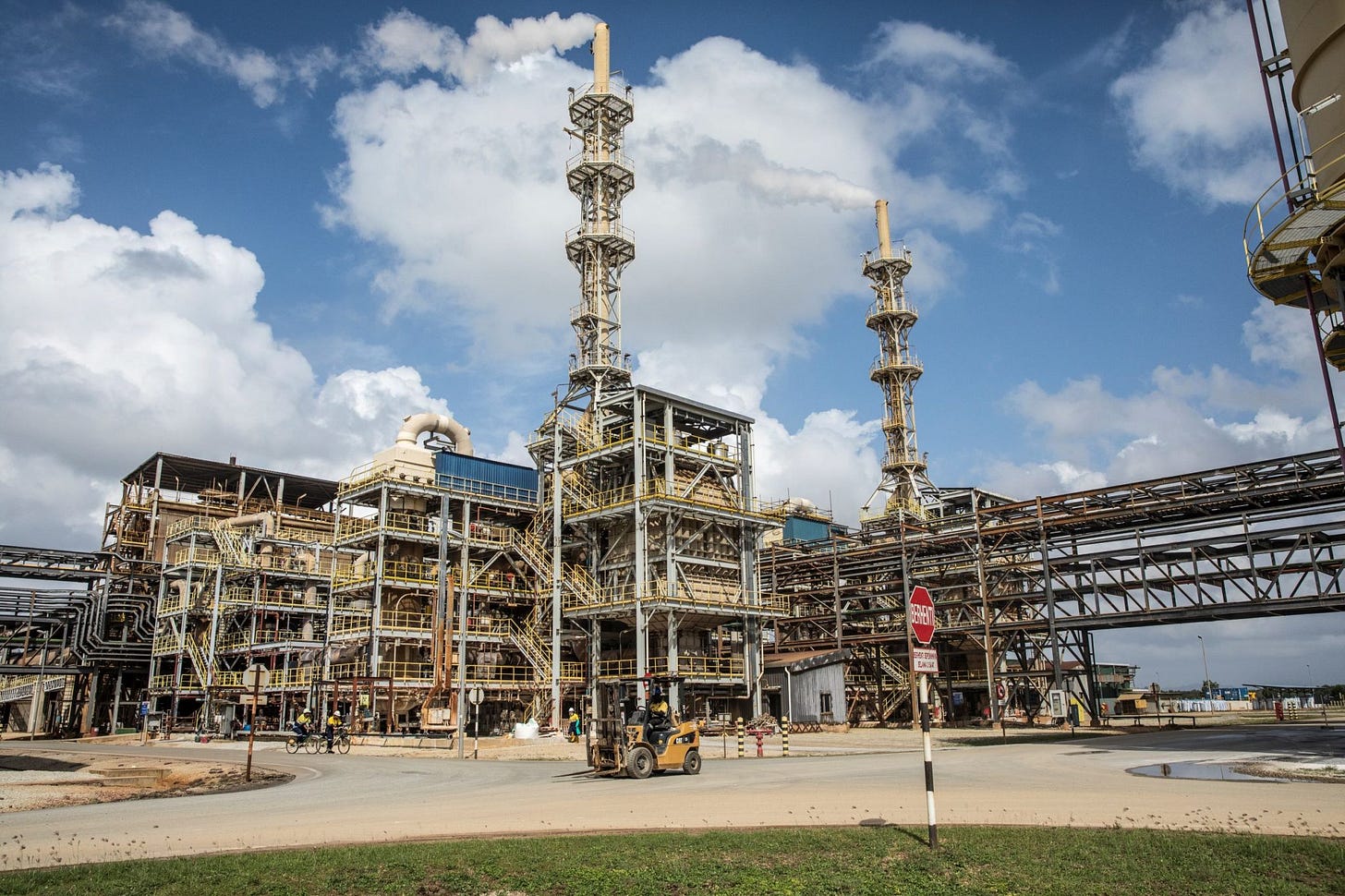Cracks in China’s Great Wall of Rare Earths; How To Make Batteries Cheaply
And more about the human and environmental costs of renewable energy and digital technology—and how we can do better.
Cracks in China’s Great Wall of Rare Earths
Last week, a new crack appeared in the wall of China’s control of an important critical metal. So far it’s a small one, but significant because it concerns a type of rare earth metal the production of which China doesn’t just dominate—China produces essentially all of it.
What happened is that Australia-based Lynas Rare Earths announced that, for the first time, they managed to produce dysprosium from ore in their Malaysia refinery—making the company the only commercial-scale producer of the material outside of China. Dysprosium is highly resistant to heat, and is a crucial input in alloys used to make the powerful magnets in wind turbines and electric vehicles. China currently produces 99 percent of the world’s supply.
Beijing dominates the production of almost all critical metals, as this just-released report from the International Energy Agency underlines, but holds an especially strong grip on rare earths, a set of 17 obscure elements, including dysprosium, that are crucial for EVs and digital gadgets as well as a range of military technologies including F-35 jet fighters, missile-guidance systems, and Predator drones. China mines about 70 percent of the world’s rare earths, which is daunting enough. But even more significantly, it processes some 90 percent of all rare earth ore into refined metals. And for some metals, including dysprosium, that figure is very close to 100 percent. So the world took notice when China slapped export restrictions on dysprosium (and several other critical metals) earlier this year, in response to President Trump’s tariffs.
Given that context, “Lynas’ announcement is a major milestone,” Neha Mukherjee, a rare earths researcher with Benchmark Mineral Intelligence, tells me. While Lynas hasn’t revealed exactly how much dysprosium they have produced, their facility is designed to process up to 1,500 metric tons of dysprosium and terbium, another rare earth metal. If the company actually brings that much metal to market it could reduce China’s share of global supply from 99 percent to 66 percent, says Mukherjee. That matters “particularly for sectors like defence that are almost completely reliant on China for heavy rare earths.” Bonus: The ore in Lynas’ facility came from one of the company’s own mines in Australia. So both mining and production happened outside of China’s control.
Lynas’ nascent dysprosium operation won’t threaten China’s rare earth dominance any time soon, but it is a sign of how Western companies and governments are trying to ramp up production of the metals. Besides its Malaysia facility, Lynas is building a rare earth refinery in Texas, an endeavor which the Pentagon has supported with some $258 million in financing. Its American rival MP Materials is gearing up a rare earth production facility in the same state. MP also recently announced an agreement with Saudi Arabia’s state mining company to work together on creating a mine-to-magnet supply chain.
Meanwhile several companies are getting busy in Brazil, which is home to the world’s second biggest reserves of the metals, after China. Brazil is particularly rich in the subset of “heavy” rare earths, which includes dysprosium. Aclara Resources, a Canada-registered outfit, is digging up rare earths in Brazil and aims to send the ore to a refinery it plans to build in the US.
These are hopeful signs, but there’s a very long way to go. “Brazil’s first big rare-earths mine opened last year…backed by (US-based) Denham Capital,” reports the Wall Street Journal. “The project is one of the few outside Asia to produce dysprosium, terbium, neodymium and praseodymium—elements used to create high-power magnets. But the mine is contracted to ship most of its production to China.”
How China Makes Batteries So Cheaply
China not only leads the world in producing critical metals, but also in turning those materials into critical products, like batteries for EVs and digital gadgets. China cranks out more than three-quarters of the world’s batteries, partly because they sell them more cheaply than their competitors. How do Chinese manufacturers afford such low prices? The conventional explanation: government subsidies and low paid workers.
“But that’s an outdated perspective on what’s actually happening,” argues Oxford researcher Hannah Ritchie. “China mainly dominates these markets because it has produced a long-term industrial strategy for these technologies and has honed an optimised, modern supply chain as a result. The notion that China’s manufacturing output is purely the result of some centralised, governmental program is misguided; it has developed an incredibly competitive market with companies fighting for any edge to cut prices and beat competitors.”
While subsidies and lower wages do play a part, the big Chinese battery makers’ real advantage comes from their high levels of automation and quality control, says Ritchie. With loads of robots on the assembly line and only a small percentage of components getting thrown out for failing to meet quality standards, factories run by the EV giant BYD “can have as few as 50 workers per gigawatt-hour of production, compared to as many as 233 workers elsewhere.”
Book News
I had a great conversation with Pavan Sodhan on his new Books in 5 podcast. I woulda shaved if I’d realized there was going to be a video version!
More News Worth Knowing
👩🔧 Washington State Passes Right to Repair Laws for Electronics
♻ Global Recycling Rates Are Falling
☀️ Indian Farmers Say Solar Companies Stealing Their Land
🐑 Letting Sheep Graze Next to Solar Panels Could Improve Wool
🤣 Tesla’s Cybertruck No Longer America’s Best-Selling Electric Pickup
PS - No newsletter next week. I have to finish up a magazine assignment and other miscellany. See you May 29!





